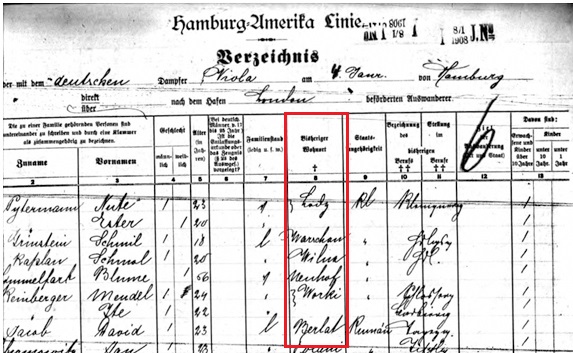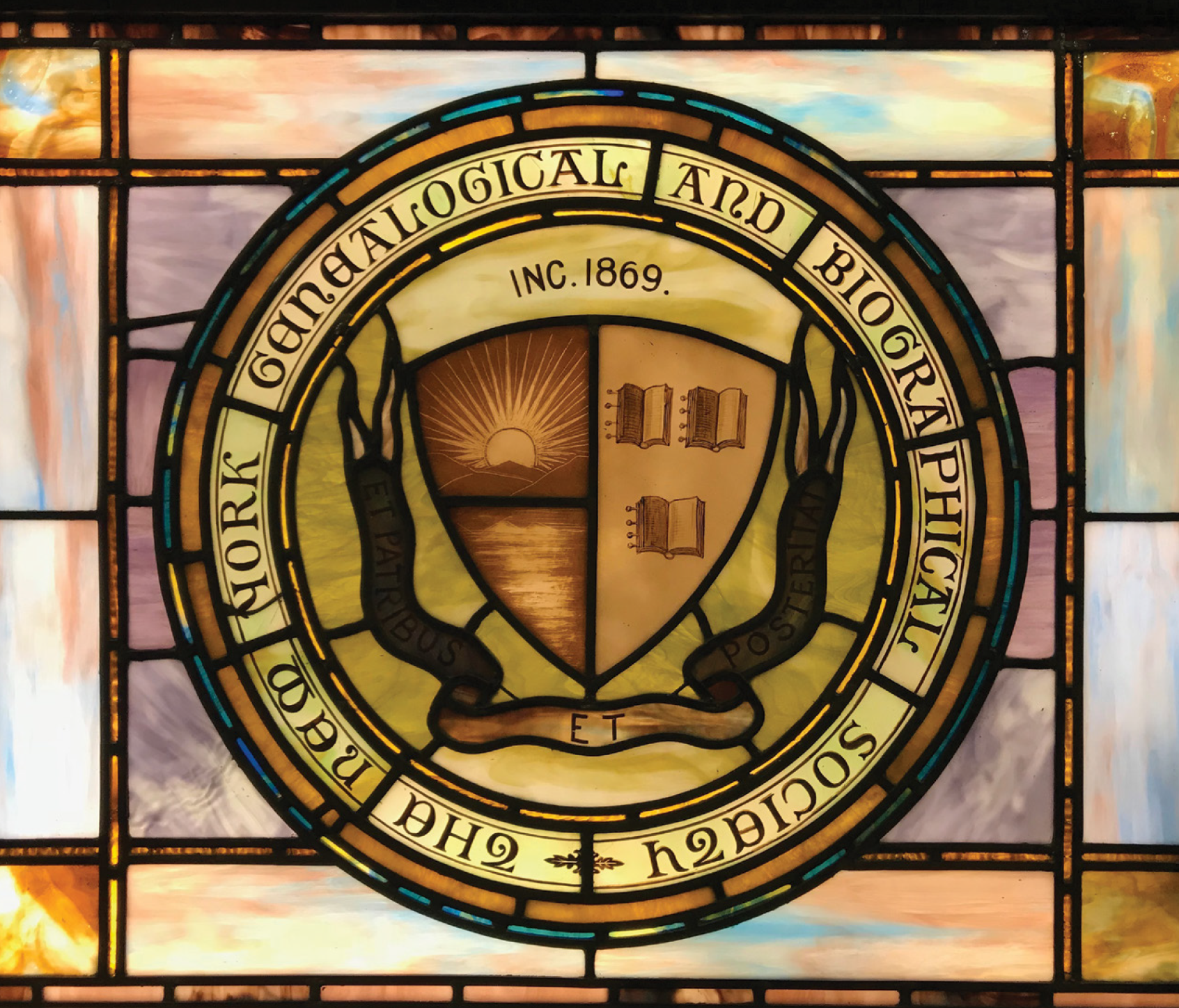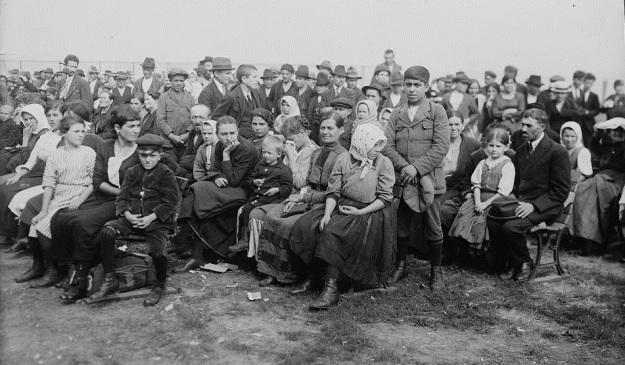The stories of our immigrant ancestors are inspiring and fascinating - the genealogical records that help us piece together how, when, and why our ancestors immigrated to America are some of the most sought-after for good reason.
These records can be hard to find, so it's important to take the right approach to accomplish this research goal. Since New York is one of the main gateways of immigration to America throughout history, the NYG&B has been helping people find their immigrant ancestors for over 150 years. Earlier this year, we delivered an hour-long session at the RootsTech 2019 conference titled Trace the Story of Immigrant Ancestors in 3 Steps.
We covered crucial strategies and looked in-depth at immigration and naturalization records. Read below for a selection of tips from the lecture, and make sure to watch the entire recording for free through the video player at the end of this article.
Good luck searching!
Finding your immigrant ancestor is a process - begin after immigration and work backward
Like all things in family history, finding the records and reconstructing the story of immigrant ancestors is a process - it doesn’t happen with one click, and it doesn’t happen in just a few moments.
Researchers should complete a reasonably exhaustive search of the immigrant ancestor’s life after they arrived in America. Begin by focusing on research in this country before you attempt to search for records in their country of origin.
The more we learn about an immigrant ancestor’s life after they arrived, the better we can trace their story. In doing so, you will encounter crucial information that you will need to piece together this story, such as date of immigration, place of origin and many other important facts.
Strategies and tactics should vary greatly depending on the period
This core truth of genealogical research also applies to the records of our immigrant ancestors. As the United States grew and evolved over the centuries, so did the processes that generate the records we’re interested in.
This is why it’s crucial to take a step back, forget about the names and dates, and do some research on the general history of the records you need. Knowing when and how processes changed will give you vital clues that will help you find and interpret the records you seek.
In the video below, Ashley Lish covers the history of immigration records, and Frederick Wertz covers the history of naturalization in the United States. Another great source for a comprehensive overview of all New York genealogy topics is the New York Family History Research Guide and Gazetteer.
Census records are the perfect place to start
Working backward through census records is an excellent way to start. Try to locate the immigrant and their household in both federal and state census records.
Most censuses will ask each individual where they were born - an excellent piece of information for determining exactly which ancestor of yours was an immigrant.
Some censuses also ask about naturalization, which is the process of formally becoming a United States citizen.
Naturalization is an important part of the immigrant ancestor’s story, and records generated by this process can yield valuable information about their journey to America.
The 1900, 1910, 1920, and 1930 Federal Census asks “is the household member naturalized?” And the 1920 Federal Census asks for the specific year of naturalization.
The New York State Census asks “Is the household member a naturalized voter?” in every state census from 1855 onward. The 1925 state census asks for the year and location of naturalization. Learn where to access New York State Census records online in our online guide to this subject.
You can use consecutive censuses to create a time window during which your ancestor was naturalized - this will be very helpful for investigating their naturalization.
Naturalization was a two-step process - look for records from both steps
Though the exact process for becoming a United State citizen has evolved, it almost always involved two steps that would happen years apart.
First, the immigrant needed to formally declare their intention to become a U.S. citizen. The document produced by this first step is known as the Declaration of Intent (sometimes called “first papers”).
There was then a waiting period that (for the most part) was five years long. After this waiting period, the immigrant filed their official Application for Citizenship - part two of the process.
It’s important to remember that since there was a number of years between steps, these records could exist in totally different locations. An ancestor could have filed their declaration of intent in New York City, but then moved to Chicago and filed their application for citizenship there.
For more information on naturalization records and where to find them, skip to about 43 minutes in the video presentation below.

Avoid making assumptions: Your ancestor’s name was not changed at Ellis Island!
Immigrant stories passed down through generations are filled with unverified family lore, and there are many widely believed myths about immigration as well.
A prime example is the old "name change at Ellis Island" myth - the reality is your immigrant ancestor’s name was almost certainly not changed at Ellis Island - but that doesn’t mean it didn’t change.
One commonly overlooked source of name changes are naturalizations that occurred after 1906.
Before 1906, an immigrant needed to file for citizenship and a name change (if they desired one) in separate processes. After 1906, immigrants were able to file for name changes along with naturalization - if that’s the case, the naturalization records will contain all the information you need to uncover your family’s original name.
You don't have to immediately assume that other stories are false - just don't take them at face value and assume they are true. Take the approach of the rigorous genealogist - seek to verify everything with acceptable evidence!
Don’t forget emigration records
While you should begin with a focus on records within the United States first, don’t forget to eventually seek emigration records once you know more about your ancestor’s journey.
There may be a record of your ancestor leaving their home country, and depending on the period this can provide crucial information about exactly where they lived in their old country.
Keep in mind that your ancestor’s transoceanic journey may have originated in a port far from their home - it was not uncommon for journeys to take several legs, so you may even find them in the records of a country where they did not live.
Ashley Lish covers this in the passenger lists section of the video below.

The port of New York is not the only active port where an ancestor could have arrived
Of course, New York City was not the only port that immigrants came to the United States through. Boston, Philadelphia, Baltimore, and New Orleans saw many immigrant arrivals.
This is important to know even if your family lore says your ancestor arrived in New York - in fact, even census records can incorrectly identify New York as the port of arrival.
Why? Family stories can change over time, and memory is an imperfect thing - census takers just wrote down what the head of the household recalled from memory. Decades after arriving, a different port city could potentially be misremembered as New York.
Full Video: Trace the Story of Immigrant Ancestors in 3 Steps
More Genealogy Reading
-
New York State Vital Records Guide
-
New York State Census Records Online
-
Surprising Facts About Immigration to New York
-
New Records: Shipwrecked Passengers to America, 1817 - 1875
-
Historical New York Maps for Genealogy Research
About the New York Genealogical and Biographical Society

a registered 501(c)(3) organization devoted to
preserving, documenting, and sharing the history of
New York State families. Read more about our mission.
Since 1869, our mission has been to help our thousands of worldwide members discover their family's New York story, and there has never been a better time to join.
The cost of an Individual Annual Membership is less than six dollars a month, and includes the following benefits:
- Access to over 50 exclusive digital record sets covering the entire state of New York, including the fully searchable archives of The Record.
- A complimentary subscription to all of Findmypast's North American records, as well as U.K. and Irish Census records.
- Access to hundreds of expert-authored Knowledge Base articles and webinars to help you navigate the tricky New York research landscape.
- Exclusive discounts and advanced access to conferences, seminars, workshops and lectures to learn more about researching people and places across New York State.
To learn more or join us, please visit our member benefits page.
